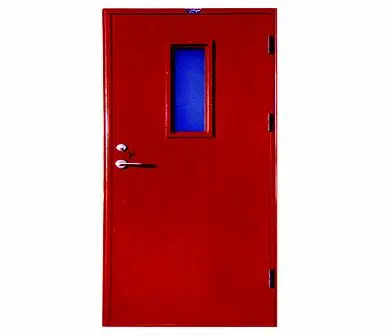Understanding the New Fire Door Height and Width Regulations and Standards
Fire doors play a critical role in ensuring safety during emergencies by preventing the spread of fire and smoke. Recent updates in fire door standards have introduced new guidelines regarding fire door dimensions, particularly in terms of height. As a leading fire door manufacturer in China, we are committed to providing you with the latest information on fire door regulations to help you select the right products for your building’s safety needs.

Updated Fire Door Height Standards
According to the revised national standard GB 12955-2018, which came into effect on January 1, 2018, fire doors are now subject to stricter regulations regarding their dimensions and performance. This standard specifies the fire resistance testing methods that must be passed for a door to be certified as a fire door, and it includes new height requirements for various door classes.
- Standard Fire Door Sizes: Generally, fire doors with dimensions up to 1800mm in width and 2400mm in height can bear the fire door certification mark. This means that for typical applications, these dimensions should suffice.
- Class B Fire Doors: These can have a height of up to 2700mm, but the clear height of the door should not exceed 2400mm if it includes a transom window above the door leaf.
- Non-Standard Fire Doors: Any fire door that exceeds 1800mm in width or 2400mm in height is considered a non-standard door and requires special approval and testing before it can be manufactured and installed.
Fire Door Width Requirements
Fire door width is equally important as height in ensuring effective performance during a fire emergency. The updated guidelines provide detailed specifications:
- Single-Leaf Fire Doors: Typically, the standard width is 900mm to 1000mm, with a height ranging from 2100mm to 2300mm.
- Double-Leaf Fire Doors: These doors usually have a width ranging from 1200mm to 1800mm and a standard height of 2100mm to 2300mm.
These dimensions are critical for ensuring proper fit and function, particularly in emergency situations where the door must be able to close tightly to prevent the spread of fire and smoke.
Compliance and Certification for Fire Doors
Fire doors must comply with the GB/T 12955-2018 standard for fire resistance and performance. Compliance includes passing the rigorous fire resistance test outlined in the standard, which evaluates the door’s ability to prevent the passage of fire and smoke for a specified period. Only doors that meet these criteria receive a certification mark from the Ministry of Public Security and the Standard Inspection Bureau, verifying their status as certified fire doors.
Impact of the New Standards on Fire Door Production
Due to the stringent requirements set by the Ministry of Public Security in document Public Security Evaluation No. 70-2013, fire doors exceeding the specified standard dimensions require re-certification of production qualifications. This has implications for manufacturers and consumers alike:
- Manufacturing Limitations: Fire doors exceeding 2100mm in height or 1000mm in width for single-leaf doors, and 2300mm in height for double-leaf doors, are no longer standard and cannot be produced without re-certification. This limits the availability of non-standard sizes in the market.
- Increased Costs and Time: If non-standard sizes are needed, the production process involves lengthy and costly testing and certification, making it an impractical choice for many projects.
Fire Door Material Classification
Fire doors come in various materials, each with specific fire-resistant properties:
- Wooden Fire Doors (Fire Resistant Timber Doorsets): Constructed from fire-retardant timber or timber products, these doors offer good fire resistance while maintaining aesthetic appeal.
- Steel Fire Doors (Fire Resistant Steel Doorsets): Made from steel, these doors provide robust fire protection and are often used in industrial and commercial settings. They can be filled with non-toxic fire insulation materials and are fitted with fire-resistant hardware.
- Steel-Wood Composite Fire Doors: These combine the strength of steel with the aesthetic appeal of wood, providing a versatile option for various building types.
Choosing the Right Fire Door
Selecting the appropriate fire door depends on several factors, including the building type, door placement, and specific fire safety requirements. It’s essential to ensure that all fire doors meet the updated standards to guarantee effective protection during an emergency.
For professional guidance or to explore our range of certified fire doors, feel free to contact us. We are committed to providing high-quality, compliant fire doors that safeguard lives and property.
